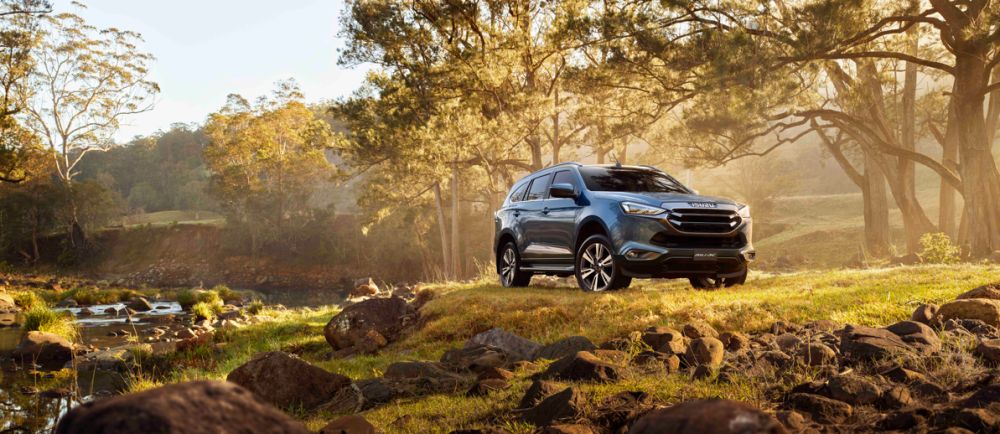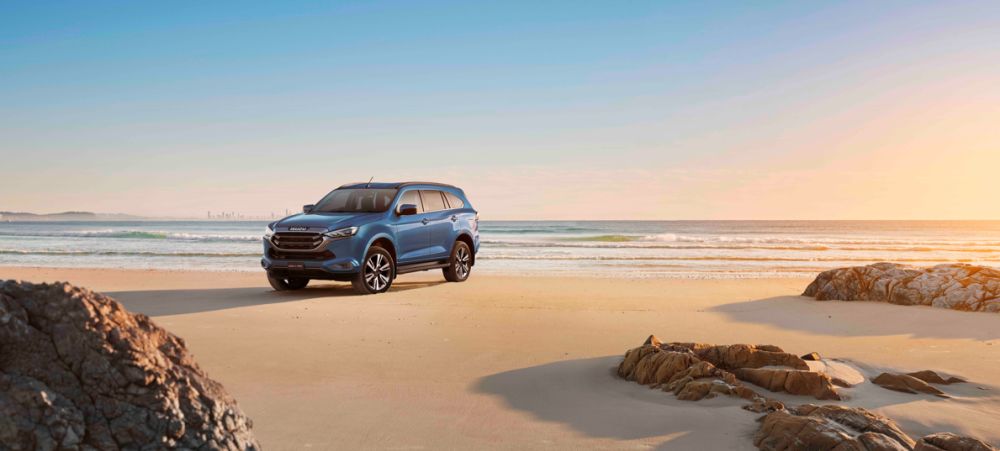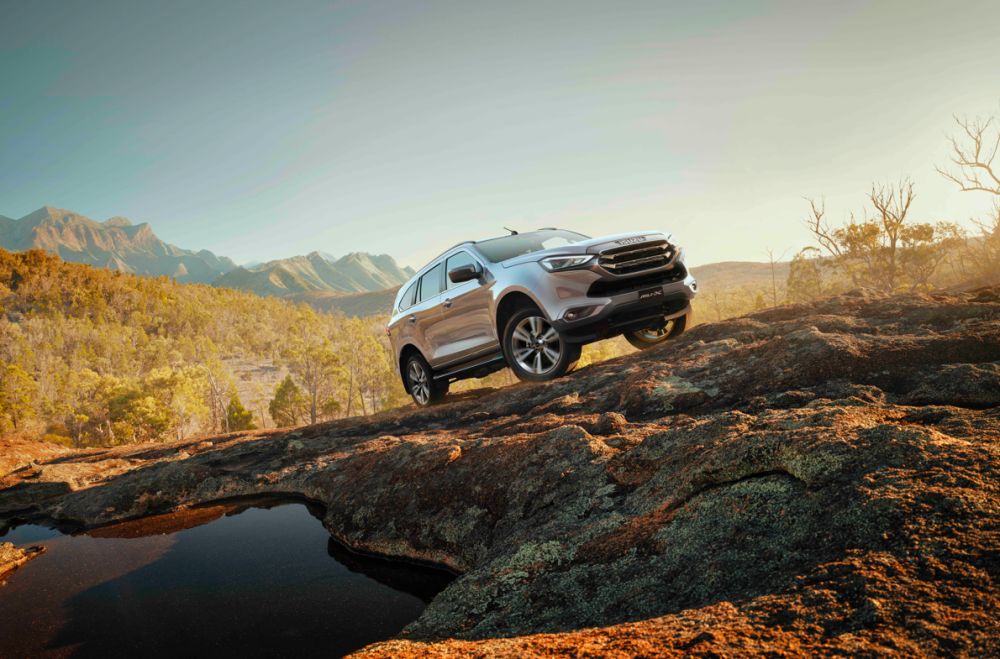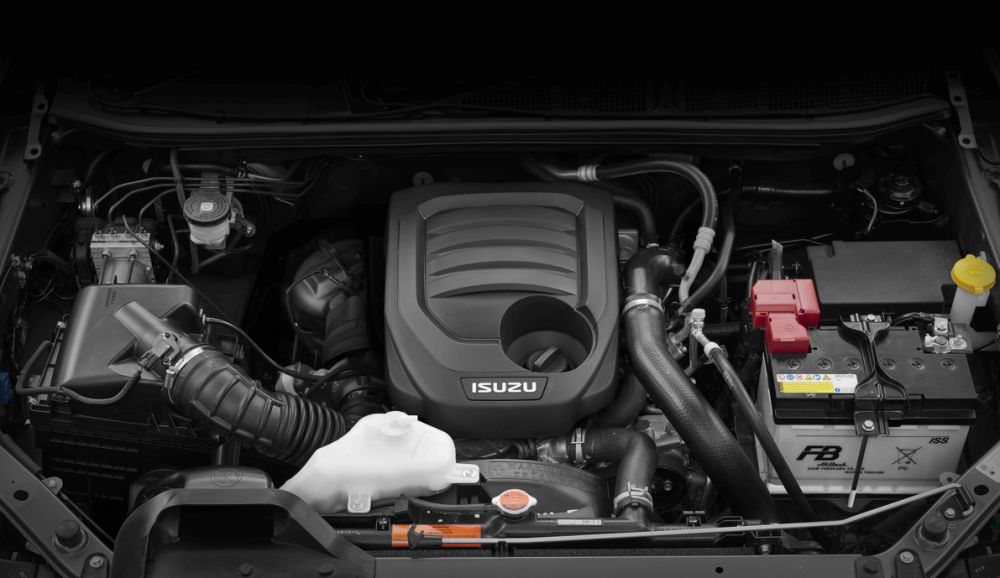
Isuzu Nails 4WD Form and Function
The common sight of utes on Australian roads shows they’re a popular genre for everyone from workers to families — but nothing confirms it more than the huge sales figures. Australians bought 38,489 utes in the first two months of 2024.
Ford’s Ranger found 9200 buyers and the Toyota Hilux wasn’t far behind. The increasingly popular Isuzu Ute Australia brand also did well — with 8450 sales of its ute and SUV models — but in perspective, its sales to date of just its two vehicles are more than BMW, Audi and Mercedes-Benz Cars combined.
Isuzu sales are up 45 per cent this year compared with the same time in 2023 and with a new variant now in the game, can only go higher.
The company has introduced a 1.9-litre turbo-diesel engine as a cost-effective option to the ongoing 3.0-litre diesel, saving buyers $2000 on the purchase price and another saving at the fuel bowser. The 1.9 has a claimed fuel consumption of 7.4 litres/100km compared with the 3.0-litre version at 8.3 L/100km, which indicates a $2 saving for every 100km driven.
The smaller engine option is a good deal for buyers who don’t need the extra performance, but for those who need the power and prefer the extra cubic centimetres, the latest 3.0-litre engine has a lot of appeal.
Fitted to the MU-X SUV — the wagon version of the D-Max ute — for this review, the 3.0-litre is a relaxed and economical alternative to other 4WD SUVs.
The LS-T version, in its more value-oriented 2023 update, is even more appealing as Isuzu has applied a drive-away price across Australia, saving about $5500.

How much?
Isuzu has launched the MU-X SUV in this 2023 update in three versions, priced from $47,400 (LS-M 1.9 2WD) through to the LS-T here at $67,950 drive away, down from the previous price of $69,400 plus on-road costs.
All have seven seats but buyers can chose between rear-wheel drive or full four-wheel drive with two-speed transfer case.
How Big?
The MU-X is similar to other 4WD wagons in dimensions, such as the Ford Everest, at 4850mm long and 1870mm wide. (The Everest is 4914mm and 1923mm respectively). It is 1815mm high and sits on a 2855mm wheelbase.
The turning circle is better than some SUVs at 11.4m (Everest is 11.8m and the Honda CR-V, for example, is a wider 12m) with reasonable visibility helped by the rearview camera.
Luggage space is excellent, much attributed to the light-commercial vehicle basis and the height of the storage area atop the ladder frame.
With all three rows in place, there is 311 litres available for cargo behind the third seat, which equates to a light-car model.
Drop the seat and that grows to 1119 litres and with the second row also flat, there’s 2138 litres. Ford claims 898 litres and 1823 litres for these seat positions respectively.
Good news for travellers who pack their vehicle to the gunwales is the full-size spare wheel that is stored in a cradle beneath the boot. The cradle lowers the spare wheel so you don’t have to first empty the boot.

How fast?
Tell the truth: You’re not looking at one of these for your next performance car. The MU-X fits the mould as a leisure-focused, go-anywhere machine that is designed and engineered around family mobility.
Like nearly all its rivals — Everest, Fortuner and Pajero Sport — it’s a rugged body-on-ladder-frame seven seater powered by a turbo-diesel engine, with 4WD and a two-speed transfer case. There’s not too many places a wagon like this can’t access. Additionally, it’s strong enough to tow a family caravan.
So speed, handling and related road holding attributes won’t feature in any test review.
The 3.0-litre diesel engine pumps 140kW and 450Nm which is on par with rivals. The torque arrives in a narrow 1600—2600rpm band which can dent performance if it stays too long outside this bracket, but as the engine isn’t designed for higher revs, it’s best avoiding prompting it to areas where it’s not comfortable.
That keeps the wagon relatively quiet and stress free, too. Another upside is that fuel consumption is very good, better than rivals and in this test case, better than Isuzu reckoned.
Isuzu fit a six-speed automatic (no manual option) which works well and perhaps the only criticism could be that with the narrow torque band a couple of extra cogs could improve performance. Then again, it would come at extra cost.
The transfer case is a simple electric switch that is also shared with other manufacturers and never had a hiccup on test.

How thirsty?
Isuzu claims 8.3 litres/100km but our average was 7.6 L/100km. It feeds from an 80 litre tank, ostensibly giving a range of 1050km.
What’s inside?
Isuzu has made no changes to expanding its infotainment system in its recent update, so there is wireless connection of Apple CarPlay but the Android Auto feature needs a hard cable connection.
Also carrying over is the 9.0-inch touchscreen and standard satellite navigation, along with the busy driver’s instrument cluster — a feature I mention because it has small graphics and fonts and can be difficult to read.
This is made worse by the sheer volume of data being presented in the small space which also means a delay in it appearing on the dash after switching on the ignition.
The audio system is high quality with standard digital radio and eight speakers.
Seats have leather facings that extends to a leather steering wheel cover, which combined with stylish dash and door trim design brings the MU-X above the workhorse category and well into the family wagon environment.
Other features are electric front seat adjustment, ambient lighting and electric tailgate with hands-free operation.
A clever addition is the engine remote starter that allows the engine to be powered up to run the air conditioning or heater prior to driving off in poor weather conditions.
How safe?
The latest MU-X has not as yet been crash tested so no star rating from ANCAP, but it is almost a clone of its D-Max ute sibling so can share the results. In 2020, the D-Max scored five stars.
Safety gear includes speed sign recognition, lane-departure warning and assistance, blind-spot monitoring, rear cross-traffic alert, trailer-sway control and eight airbags, tyre pressure monitor, autonomous braking with pedestrian and cyclist detection and an airbag update in 2022 that included a revised driver’s knee airbag and instrument cluster.
In its latest upgrade, Isuzu redesigned the blind-spot monitoring and rear cross-traffic alert so it is disconnected when a trailer is mounted, thus saving a few driver headaches.
Service costs?
Isuzu has a six-year, 150,000km warranty but the capped-price service program and roadside assistance are for seven years.
Scheduled servicing is every 15,000km or 12 months. The capped price program charges $435 for the first visit with the first three years costing $1545. Over seven years, the service charge is $3689. The most expensive service is at 90,000km with a cost of $799.
Rivals?
Ford Everest Trend 2.0: $66,790*
LDV D90 Exec 2.0: $52,095
Mitsubishi Pajero Sport GSR: $62,440*
SsangYong Rexton Ultimate: $58,000
Toyota Fortuner Crusade: $66,755*
Toyota Prado GXL: $69,530*
* plus on-road costs
Pricing?
The MU-X LS-T is listed at $67,950 drive away.
Once you've found the right car, the next step is sorting out car finance that actually works for your budget. Credit One is Australia's best-reviewed finance broker, with 3,000+ five-star Google reviews from customers who've been through the process. Check out Credit One reviews to see what people say, or head straight to the loan repayment calculator to see what the numbers look like.